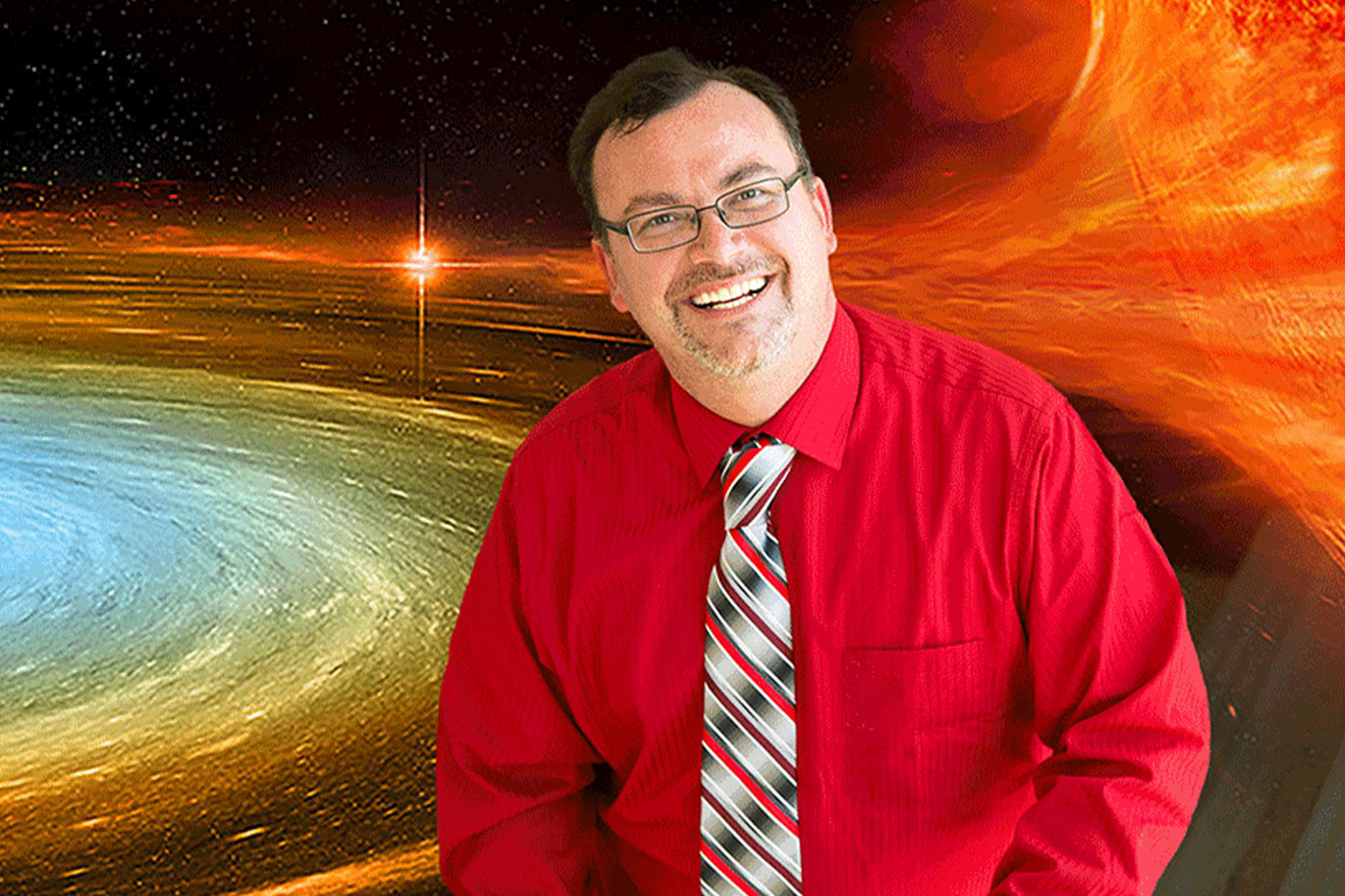Texas Tech physicist explains intricacies and impacts of most powerful solar storm to reach Earth in decades.
The sun not only warms planet Earth, but it also occasionally sends significant reminders of its might and power this way.
Such was the case several weeks ago when the most powerful solar storm in decades disrupted various GPS systems, communications and flight paths while providing a window into a beautiful natural phenomenon for a larger swath of the population.
“A solar storm happens when there is a magnetic reconnection event on the surface of the sun,” explained Tom Maccarone, a professor in the Department of Physics & Astronomy in the College of Arts & Sciences at Texas Tech University. “The sun’s atmosphere has significant amounts of ionized gas in it, and every once in a while you have magnetic fields that get too close to each other and their magnetic fields are destroyed.”

The result is the creation of kinetic energy that produces charged particles with a large amount of gas ultimately propelled from the corona, the outermost portion of the sun’s atmosphere. This is referred to as a coronal mass ejection (CME), an event more common during the peak of the sun’s 22-year solar cycle. Sometimes these are projected directly toward the Earth while other times they miss the planet completely.
According to experts, this was the most significant solar storm since 2003. The most powerful solar storm in history occurred in 1859 and is known as the Carrington Event. This most recent one, which began about two weeks ago, also was classified as a G5 or extreme geomagnetic storm.
“We expect the next solar maximum to be next summer, so it’s not too surprising to have a major solar storm now,” Maccarone said. “Solar activity varies on a 22-year cycle, and every 11 years there is a new maximum. Every 22 years the sun’s poles flip, and it takes 22 years to get back to where it was before. We are about halfway between the second maximum, which is expected next summer.”
One of the most dramatic impacts of the solar storm was how far south the natural phenomenon, the Northern Lights, could be observed. The Northern Lights (aurora borealis) are usually seen only near the north pole and the Southern Lights (aurora australis) near the south pole.
This time, the Northern Lights were observed across the U.S. as well as parts of China and Europe while the Southern Lights were seen in Australia, Chile and Argentina.
“The aurorae are caused by charged particles interacting with the Earth’s magnetic field,” Maccarone explained. “Normally, you don’t get enough charged particles to have a noticeable enough number closer to the equator to see because usually the charged particles come in, encounter the Earth’s magnetic field and then circle around toward the poles.”
The strength of the solar storm caused something different to happen this time as the sheer volume and energy of the charged particles created more activity across a wider part of the atmosphere.
That led to numerous stunning images being shared on social media. In Lubbock and the surrounding area, though, overcast skies during the solar storm’s peak times impeded views.
“Unfortunately, around here, the nights when it was going to be most visible were also the nights when it was most cloudy,” Maccarone said.
Pictures from other parts of the country such as Alabama and Georgia showed brilliant hues of pink, violet, red and green. The stunningly sharp colors result from gases interacting with the atmosphere.
(Editors Note: Above photo was taken May 10, 2024 in rural Oklahoma.)
“Oxygen gives you green and lighter red while nitrogen causes blue and deeper red,” he said. “What takes place involves processes that are rare and happen slowly and only when a gas is at low density. They are atomic transitions we are unable to see in the laboratory on the ground where there are electrons moving around in atoms at different energy levels.”

